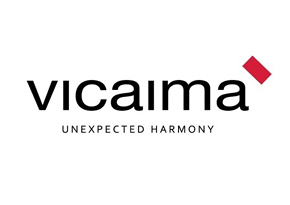- Case Studies
- The Olympic Velodrome, London
The Olympic Velodrome, London
Introduction
The distinctive and elegant shape of the Velodrome acts as a landmark to the site of the 2012 Olympic Games. Its double-curved timber clad roof is a reflection of the sloping 250 metre track inside, a synthesis of form and function which is achieved with an economy of means and materials. The double curvature structure wraps round the track, with a glazed concourse allowing views onto the track and over the park. The seating is split into upper and lower levels so that the Velodrome will not feel so vast when partially occupied. Inside, the sloping track of Siberian pine at low level and the birch ply underside of the roof cassettes at high level create a sense of spaciousness and light. The Velodrome will seat 6,000 spectators at the Olympic and Paralympic Games and afterwards it will become a hub for amateur cycling enthusiasts.
Building description
At the heart of the Velodrome is the 250 metre long track of FSC certified Siberian pine. The track’s oval shape and banked corners had a major influence on the shape of the building. The differing height requirements on the two principal axes (as a result of the seating arrangement needed to achieve good sightlines), meant that the building was ideally suited to a double curved roof form; this led to the adoption of a cable net roof structure which achieved significant savings in terms of weight and embodied energy. The shape of the upper bowl is also ideally suited to achieving natural ventilation. It is clad with highly insulated timber roof and wall panels, prefabricated off-site to reduce working at height, reduce construction time and wastage.
The upper and lower seating tiers are split by the main public circulation concourse which is fully glazed to allow views both into and out of the building. It also helps to visually separate the Western Red Cedar clad upper bowl from the ground floor back-of-house accommodation which is largely hidden behind the landscaped earth berms that form a visual plinth at the east and west ends of the building.
The track
The cycle track was designed by Ron Webb, a former track cyclist and Australian champion; his company designed the 1994 Manchester Velodrome track and the Sydney and Athens Olympic cycle tracks. The track is oval in plan, with two lengths of straight track connected by two steeply banked curves. The complex geometry required to join the straights with the banked curves was made more challenging by the need for the track to cope with the cyclists’ changing centre of gravity, balance and friction. For example, as a sprint cyclist (weight with cycle, say 100kg), rides at speed through a curve on an Olympic track, centrifugal forces will increase the total weight to 170kg, a figure which would be greater if the cyclist were riding on a narrower track with a curve of smaller radius. The aim was to shape the track to benefit the cyclist exiting the curve, an aim which required extremely fine tuning. In addition, the Olympic track had to conform to critically exact dimensions. Tradesmen, working with planes and saws, had to build it to the exact 250mm racing line circumference; if this had been exceeded by more than 12mm the whole track would have been rejected.
The track surface is supported by a series of prefabricated gang-nailed timber trusses at 700mm centres, each bolted to an upright track post. The solidity of the timber trusses ensured that there was miniscule deflection. Once the trusses were in place, with angles and positions checked, a series of successive rings of pine laths were nailed to the trusses to form the track. The laths were 40mm thick and in some cases more than 6 metres long – the long lengths were essential to ensure a smooth curve round bends. In total, 193 rings of laths were used to complete the track – a linear length of about 53 kilometres of lath. The carpentry work, by J P Lane of Cork, Ireland, was completed in eight weeks. To ensure a smooth track surface, nailguns were not allowed to be used – the 338,000 nails were hammered in by hand.
Ron Wood has used the same source of timber for his cycle tracks for many years. The pine from Siberia grows in Arctic latitudes; it is durable, malleable and, apart from some initial cross-grain shrinkage, not prone to excessive movement.
The roof structure
The double curvature of the roof helps to minimise volume and so reduce heating costs, and the structure is as lightweight as possible. Although early studies had suggested that a more conventional steel structure would be cheaper, when the contractor was appointed the team were able to re-examine the cost, programme and environmental aspects of a number of different roof forms. The cable-net roof structure option eliminated three months from the programme, was £2 million cheaper and used significantly less steel (approximately one tenth of the Beijing velodrome roof structure).
The roof consists of a tension cable net system which supports timber cassette panels, insulation and roof covering. The north/south cables resist gravity and the east/west resist wind uplift; they are grouped in pairs and prestressed at the perimeter ring beam. The cables cross at right angles and are connected together at 3.6m centres.
A series of prefabricated timber roof panels cover the cable net. Each panel is a 3.6m square stressed skin box consisting of a grid of timber beams and joists clad on top with a layer of 18mm thick OSB board and underneath with a layer of 12mm thick birch-faced plywood. In order to provide temporary protection from the elements during construction the panels were delivered to site with an EPDM layer bonded to the top. The lower exposed birch faced plywood face, which forms the ceiling to the arena, was given a coating of Restol oil to help protect the visual appearance of the panels.
The corners of the timber panels and the cable net crossing points are connected by a specially developed series of fixings designed to accommodate movement in the cable net. 1027 panels in 17 different sizes were produced to cover the majority of the roof.
A series of more bespoke triangular and odd shaped panels were developed to deal with the junction between the cable net, the ring beam and the façade. The panels at the junction between the roof and the façade were extremely complex due to the nature of the geometry with each panel being unique to its location. The panels were each drawn in 3D before being cut out on a CNC cutting machine and assembled together on a jig.
Once assembled, the timber roof panels were covered with vapour barrier, 300mm insulation and a Kalzip standing seam roof covering to achieve a U-value of 0.15 W/m2K.
The façade
The façade is comprised of prefabricated timber panels that span approximately 8 metres between the primary steel trusses. They are 300mm deep with a USB board and Alutrix vapour membrane on the inside and a Bitroc sheathing layer on the outside and are filled with insulation. A series of Western red cedar shiplap boards are fixed to battens on the outside. The boards facet four times per bay to give a smoother approximation to the curved surface. Each bay of cladding is separated from the next by an aluminium fin which prevents views of the end grain on adjacent panels and helps to provide articulation to the façade. The natural protection from the elements that is provided by the shape of the bowl is further enhanced by the application of a coating of Textrol oil to help prevent weathering of the timber and to maintain its colour for as long as possible.
Environmental strategy
One problem for the design team was the highly variable occupancy pattern of the Velodrome. In addition, cyclists require warm temperatures – 26 to 28°C – but spectators need to be cooler. The venue is as compact as possible to reduce the volume of air requiring heating, and is highly insulated, allowing heating and ventilating to be easily adapted to different occupancy patterns. The infield is heated with underfloor heating. In summer the building is entirely naturally ventilated without fan assistance; air passes into an under-seat plenum through louvres in the timber cladding and is exhausted through the timber cladding louvres at the two high ends of the building.
January 2011
Year Published:November 2011
Building Type:Sports building
Location:London
Architect:Hopkins Architects, supported by The Olympic Delivery Authority
Structural Engineer: M & E Consultant:BDSP
Facade Engineer: Builder/Main Contractor:ISG
Roof Panels and Timber Façade:Wood Newton
Timber Track Joinery:Cornerstone
Internal Joinery and Doors: Wood Supplier(s):Wolseley UK and Arnold Laver
Timber Element(s):Structure and cladding, cycling track, toilet pods, doors
Timber Specie(s):Western red cedar, laminated timber, LVL and OSB, pine, all from certified sustainable sources
Suggested Reading
State of Trade Survey 2017 Q3
Following slower UK economic growth in the first half of 2017, construction product manufacturers reported the lowest balances for sales growth in two years in Q3. On the heavy side, only 10% of firms reported a quarterly increase in sales, down from 40% in Q2. Similarly, 36% of light side...
10/11/2017
Standards Update October 2017
An update of British, European and International Standards relating to timber, including new and revised Standards, those withdrawn or amended and drafts now available for public comment, updated bimonthly.
30/10/2017
List of British Standards October 2017
A list of British Standards which relate directly to timber, updated bimonthly.
30/10/2017




























